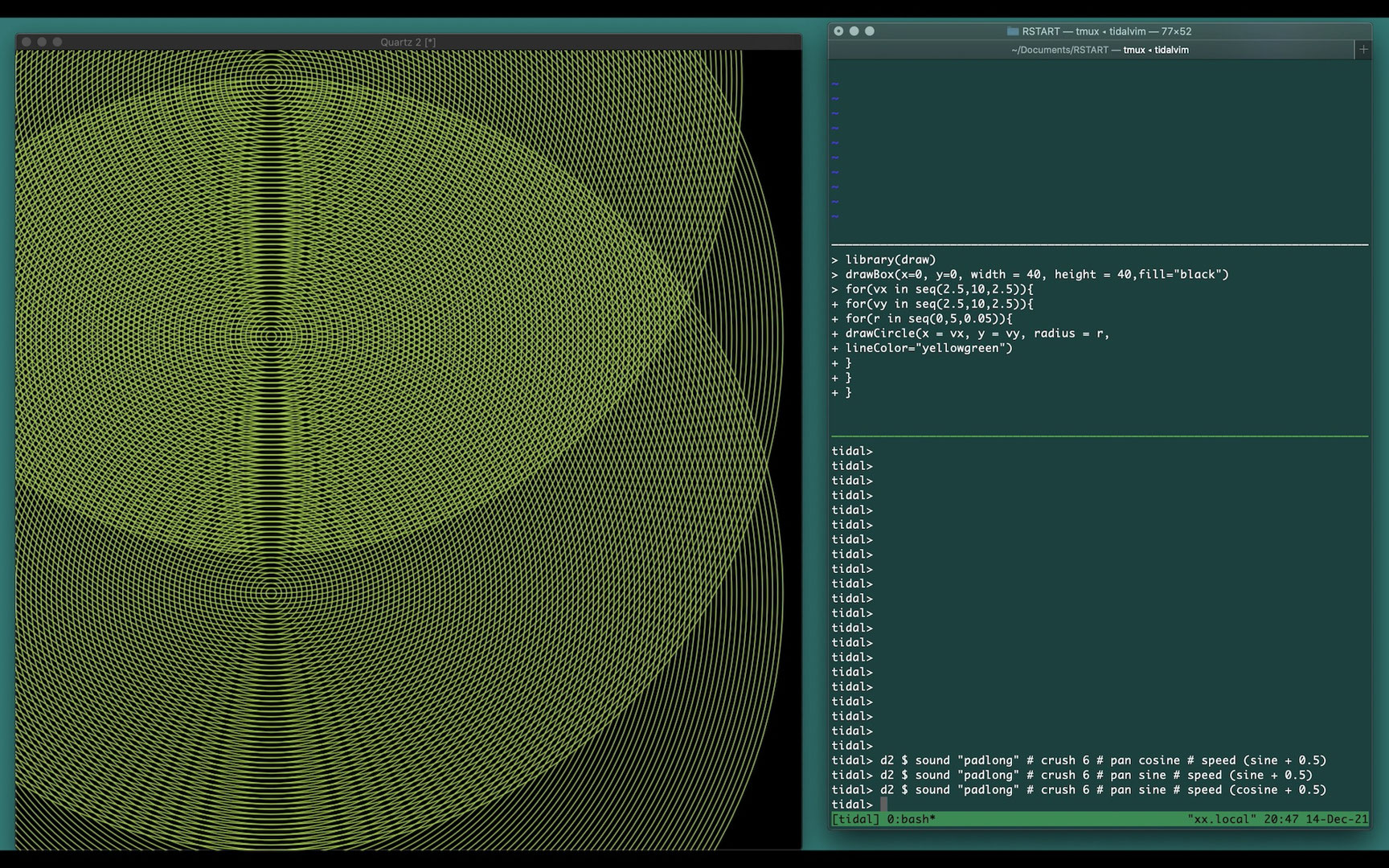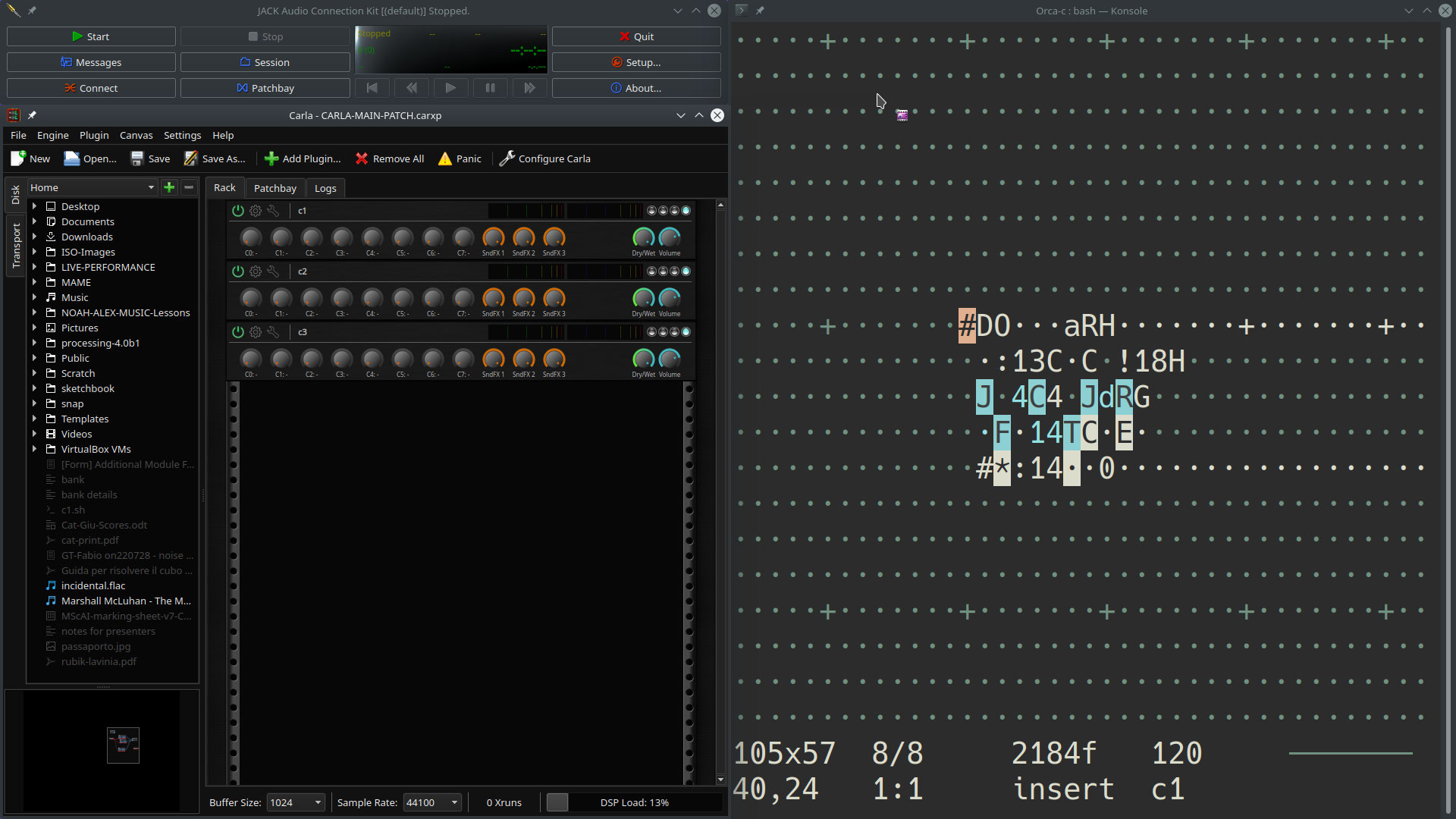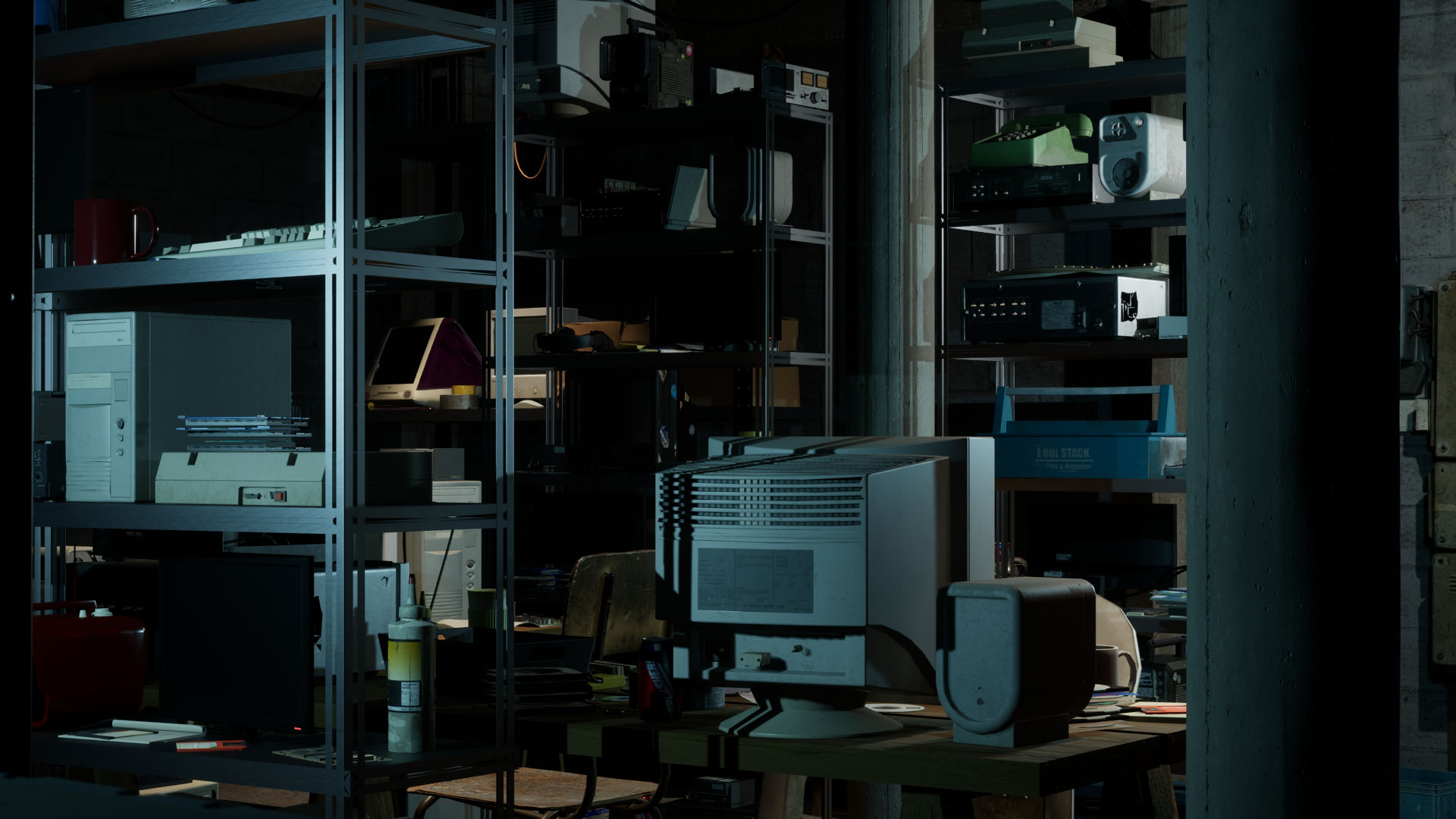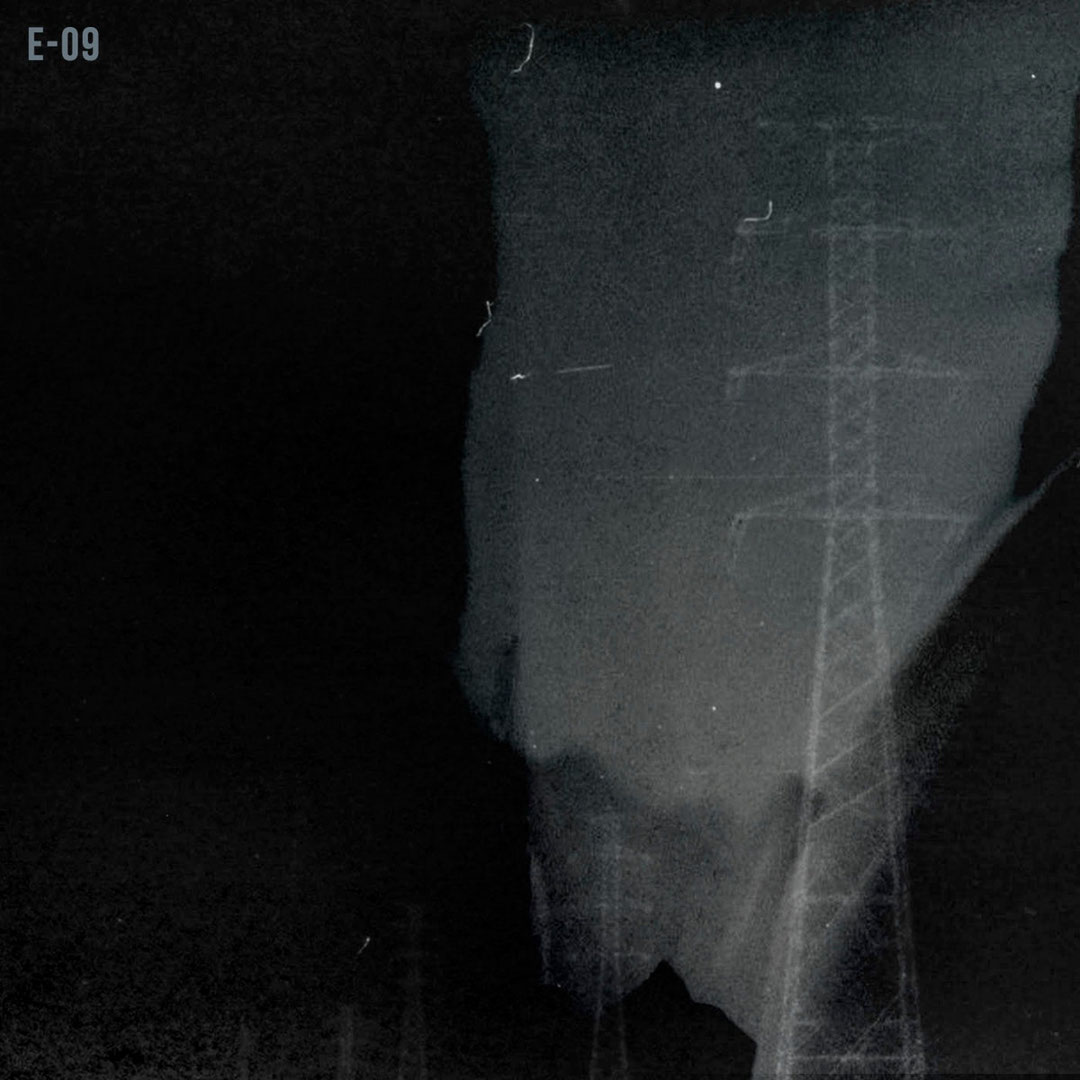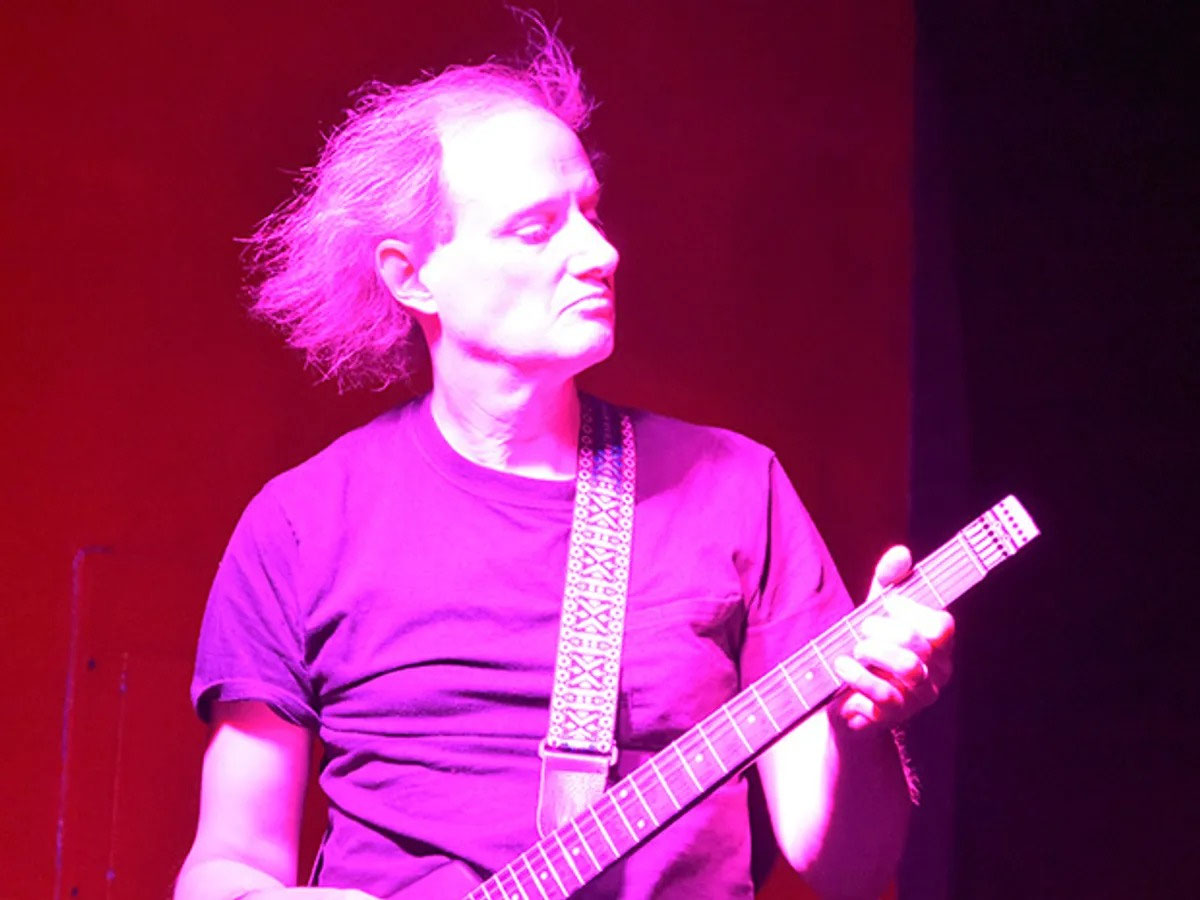
Shawn Lawson, Ryan Ross Smith
Shawn Lawson and Ryan Ross Smith will collaboratively live code a single text buffer from two remote locations to perform the audiovisual work. Lawson will live code visuals with the OpenGL Fragment shader and python in Touch Designer and Smith will live code audio with Tidal Cycles.
Shawn Lawson is a computational artist and researcher creating the computational sublime. He performs under the pseudonym Obi-Wan Codenobi where he live-codes real-time computer graphics with his open source software, The Force and The Dark Side. Lawson’s other work explores the computational sublime through a range of technology: stereoscopy, camera vision, touch screens, game controllers, hand-held devices, random number generators; and output formats: print, sculpture, mobile apps, instruction sets, animation, and interactive.
He has performed at NIME, Australia; Radical dB, Spain; ICLI, Portugal and UK; ICLC, UK, Canada, Mexico, Spain; ISEA, Canada; GENERATE!, Germany; Live => Coding, Brazil; CultureHub, NYC, CCRMA, and more. Shawn’s artwork has exhibited or screened in museums, galleries, festivals, and public space in England, Denmark, Russia, Italy, Korea, Portugal, Spain, Brazil, Turkey, Malaysia, Iran, and Canada; locally in ACM SIGGRAPH, IEEE ProCams, ACM MM, The Art Institute of Chicago, Milwaukee Art Museum, Chelsea Art Museum, Eyebeam, Aperture Foundation Gallery, Nicholas Robinson Gallery, MIT, OSU, ASU, and LTU. He has given workshops on programming or live coding in Europe and the USA. Shawn is published in the proceedings of ICLC, ACM CC, ACM SIGGRAPH, ACM SIGCHI, ACM MM and the Journal of Electronic Dance Music Culture.
Lawson has received support from from the Electronic Media and Film Program at the New York State Council on the Arts, the Experimental Television Center’s Finishing Funds Program, Kamel Lazaar Foundation, CultureHub’s Micro-Residency, and Signal Culture’s Toolmakers in Residency. Lawson studied fine arts at Carnegie Mellon University and École Nationale Supèrieure des Beaux-Arts. He received his MFA in Art and Technology Studies from the School of the Art Institute of Chicago in 2003. He is an Associate Professor and Animation Area Coordinator at Arizona State University and selectively consults for independent artists and commercial R&D.





